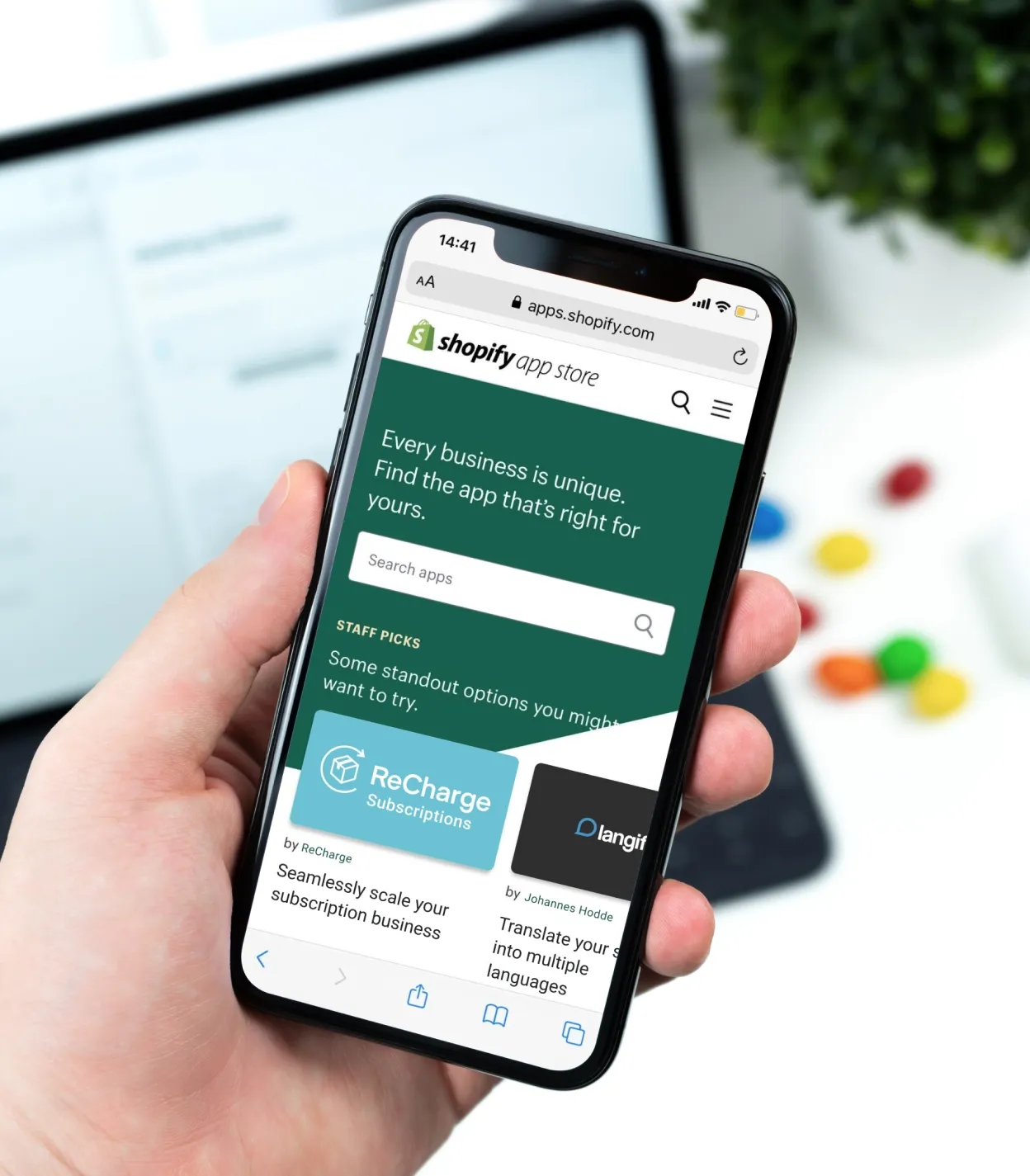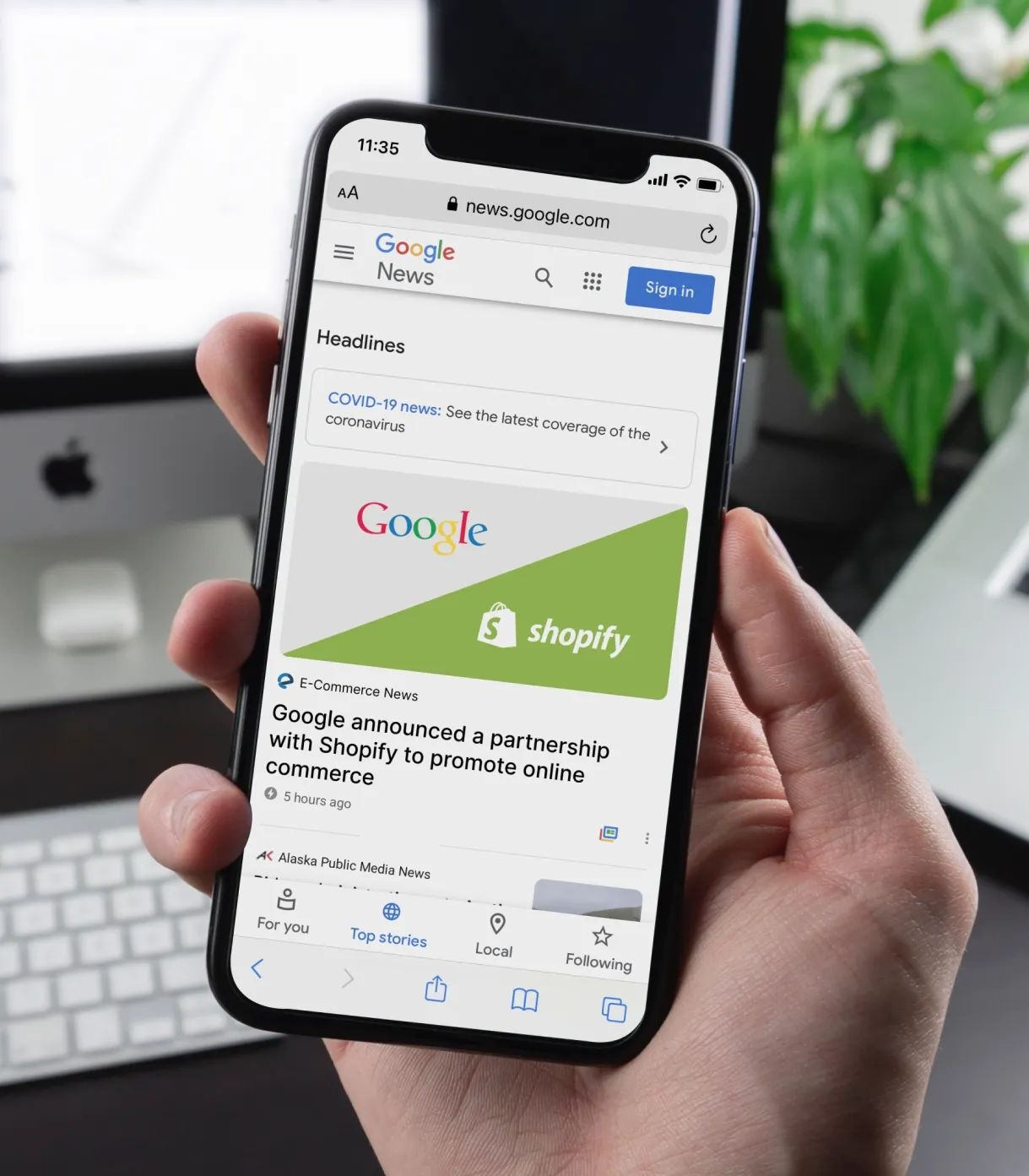
Headless commerce providing an alternative to traditional e-commerce development services is increasing in popularity. It makes possible the production of tailor-made, customizable, API-driven systems that focus on an omnichannel strategy. In this article, we will answer the question “what is headless e-commerce”, describe its specifics and advantages. We will explain everything you should know to go for the headless approach.
Key technologies behind headless e-commerce
Headless technologies have had an application in the IT field for some time now, but their use in retail has become increasingly popular recently. In the mid-2000s, retailers began using websites as an additional sale instrument to the physical shop, and many e-commerce platforms emerged. However, the first websites were handled by using different technologies with unique or overlapping strategies, and retailers were often leashed to the frontend or presentation layer.
To provide faster changes, they often needed to carry out experiments either on the “head” or face of the e-commerce platform. As consumer behavior continued to evolve at a rapid pace, the possibility to create a new customer experience was limited.
“Headless” alternatives appeared as a possibility to get more control of that presentation layer, and let shop owners efficiently handle all the specific functionalities, such as category management, discounts, promotions, and payment, and at the same time, avoid unnecessary costs and complexities. The need for strong e-commerce offerings pushes headless e-commerce forward. Growing flexibility and scalability of headless commerce infrastructure deliver an outstanding customer experience within the new digital economy.
Headless vs traditional e-commerce
Traditional e-commerce is based on tightly linked frontend and backend layers. It makes it harder to provide any high-level customizations.
The headless e-commerce definition might sound abstract but it is much simpler than its name might suggest. What does headless e-commerce mean? The headless e-commerce meaning refers to decoupled Content management API (headless CMS), an e-commerce engine for supervising orders, customer carts, and payments, and Storefronts, which are integrated with headless CMS and e-commerce engine.
Each of these parts works independently and is connected via APIs. API creates communications and real-time interaction between layers.
By separating the layers, headless commerce provides more flexibility and faster and more consistent shopping experiences in e-commerce stores. Businesses that choose a headless approach have the freedom to customize the website and enrich customer interaction.
The biggest difference is that installing, hot fixing, and upgrading a traditional CMS during development takes quite a lot of time. Being a part of the service (SaaS), a headless CMS, however, does not require this kind of maintenance and occurs in the background without a need to take any actions. Hence, programmers can shorten development time.
If you compare page loading speeds, traditional e-commerce is slower and requires more complicated integrations. At the same time, the headless e-commerce system is more efficient, lean, and quick.
A traditional e-commerce system is usually limited to its framework. Its architectural framework includes various existing resources like DBMS, data repository, programming languages, software agent-based transactions, and communication protocols. Compared to the headless approach, engineers are limited in using toolsets they can utilize to deliver new features or updates, so they ultimately compromise time-to-market. With a headless approach, companies get wider possibilities to integrate third-party services with flexible architecture and robust APIs.
Headless development benefits
We have compiled a list of headless e-commerce benefits to help you decide whether this approach is right for you. Here they are:
More flexibility and customization
Developers don’t have limitations, as frontend and backend parts are separated. It’s possible to provide any changes to the frontend part without affecting the backend. Developers are no longer tightly coupled and can build bespoke e-commerce solutions to achieve business goals.
Seamless integration of new functionality
Headless architecture simplifies third-party tools and platform integration using the APIs. With their help, the headless e-commerce frontend can be easily configured along with other third-party e-commerce CRM and CMS. Moreover, you can add extra functionality without a need to change the database, the code, and the frontend, making even the smallest change a large business risk.
Improved scalability
Headless commerce allows for adapting your brand to new trends and evolving technologies without re-platforming. By implementing the headless approach you get the bonus of scaling up your e-commerce website much more easily. With separate frontend and backend parts, necessary changes are provided without affecting any other part of the website.
A headless solution allows you to integrate new features as your business grows and quickly scale up the website as required.
Multi-channel content
Today the single-channel approach is no longer sufficient for businesses. With a headless CMS, content is automatically shared between corporate websites, intranets, and mobile applications. As a result, you may spend more time creating quality content for great customer experiences and increase your productivity.
Quick start
Consumer beliefs and behaviors are changing fast. To satisfy customers’ expectations, you can quickly make changes to your website’s frontend without modifying the backend layer, which give your business a competitive edge.
With headless e-commerce, developers can iteratively build new features to match customers’ preferences resulting in a shorter time to market.
For more insight into headless e-commerce and its advantages read our blog post.
How to get started with headless commerce
If you are going headless, there are two main approaches: building your own headless commerce architecture from scratch or leveraging available platforms with headless architecture.
What is a headless e-commerce platform? A headless e-commerce platform is a solution that includes built-in APIs to give you the ultimate flexibility to design your online store for business growth. There are a variety of platforms that can handle your business’s growth and fit your needs. Here we give some examples of the best headless e-commerce platforms. Be sure you analyze each in detail:
Shopify headless
As a headless e-commerce platform, Shopify has plenty of APIs that help go headless without losing your ability to use the commerce functionality you have now. When we go headless with Shopify, APIs are used to handle products, shopping carts, orders, collections, payment processes and shipping. Merchants use a CMS to add products and manage orders in Shopify.
Shopify Plus is a cost-effective enterprise platform that provides tools and systems for headless e-commerce development. To operate website content, you may either use the integration of a third-party headless CMS system or develop a storefront from scratch with Shopify API and headless CMS API integration.
Available Storefront API help brands design fast and introduce them such business systems as ERP, PIM, CRM, and CMS.
Shopify headless e-commerce is a good fit for both mid-market and enterprise businesses. Overall, you can easily operate with pre-built solutions and little developer knowledge, but extending the level of customization is possible continuously only with a skilled developer.
As Shopify runs on a SaaS model, merchants need to pay a monthly fee to use the platform. It’s a great opportunity for small businesses to cut costs and make the setup easy, but as operations scale up, so do the charges. Additionally, Shopify stores are customizable for complex catalogs. If you are looking to stand out from the competition with a unique design, Shopify offers a lot of room for customization to emphasize your uniqueness.
BigCommerce headless
BigCommerce is one of the best headless e-commerce platforms. BigCommerce helps customers to personalize each step of the headless e-commerce development process.
Going headless with BigCommerce, you may bridge content and commerce without serious efforts using the BigCommerce Product Information Management system (PIM).
A strong online experience for customers is a key demand in the competitive retail market. Development of headless functionality is simplified by deploying third-party systems at the backend. This helps prevent the issues that may be experienced by the systems with shared resources. BigCommerce merges the best of the existing approaches into its new customized solution.
The key benefits of the BigCommerce headless approach are advanced SEO support, a single admin panel that can support many frontend shops, mobile adaptation, multichannel commerce availability, and top environmental APIs.
Adobe Commerce (formerly Magento) headless
One of the top headless e-commerce platforms that make extreme customization possible is Adobe Commerce (formerly Magento).
Going headless with Adobe Commerce allows companies wider experiments with new functionality and integrations within a short period of time. With separate frontend and backend parts, retailers boost performance and speed upon development. One of the primary reasons to choose Adobe Commerce is that it has a diverse, highly applicable feature system compatible with all business models.
It is very popular among such big brands as Ford, Nike, and Coca-Cola for its flexible, customizable, and scalable options. With Adobe Commerce, you are able not only to scale fast but also to create a unique store.
WooCommerce headless
WooCommerce headless commerce provides full freedom to build any necessary business interfaces. With the use of the Rest API of WordPress, PHP, and existing infrastructure services, WooCommerce allows development of a complete e-commerce website based on your needs. It enables seamless decoupling of the presentation layer from the database side. The platform also lets users create template-free e-commerce websites by providing freedom in developing the frontend. WooCommerce plugins ensure creation of a wide range of custom options.
It is viral among small businesses. However, WooCommerce requires regular developer attention due to frequent updates, patches, or plugin conflicts.
How to build a website with a headless CMS
So you are about to embark on a new development project. First, you’ve got to figure out what data flow you will use. Two key questions will arise: "what data must be updated after every customer’s visit" and "what data can be static on the website". Depending on the approach you will choose, you may use static site generators (SSG) or server-side rendering concept (SSR).
What is the difference between them? The Static site generation approach is successfully used in e-commerce, when the site content is not changed and most of the data is static, except product stock, cart, and checkout management. In this case, the website version will be pre-built and hosted as static content. This means access to Static content is much faster than to regularly generated HTML pages. Thus, it will increase site performance and allow you to implement a very dynamic UI.
How can a Static Site Generator help?
In the case of choosing one of the many static site generators, such as Hugo, Gatsby, Metalsmith, Middleman, or others, you’ll need open-source libraries to aid in the fetching of your data while building the site. Static site generators help increase efficiency in keeping up with the creation and maintenance of websites.
Proper planning to build a better website
Just like any other project, website building is divided into phases for effective planning and understanding of the overall framework for your website in terms of content and design. To reach your target audience and edge out your competition, the following stages should be included into your headless web design process:
- Select headless Content Management System (CMS): research features and challenges before choosing a headless CMS that meets your needs. There're various options with different prices and possibilities. Among the best headless systems are Wordpress VIP, Quintype, Hygraph, Contentful, Arc XP, Ghost, Strapi, dotCMS, Magnolia, Sanity.
- Implement design: implementing a design for the headless front provides developers with independence and flexibility. The front is not related directly to the e-commerce platform and you can implement it as dynamically as possible.
- Design the architecture and possible integrations with the headless CMS and e-commerce platform: you may pair the advantages from CMS models with those of headless builds. This lets you reserve some features that are “stuck” to the core platform engine while still bringing new pages and plugins that don't depend on the default database for content.
- Select the approach: SSG (static site generation) or SSR (server side rendering).
- Implement a frontend: with a headless approach, you can add numerous interconnected elements on the frontend, helping to create a unique user experience without any backend effort. Among the most popular technologies used by top-performing development teams are Next and Gatsby. They deliver a dynamic web experience with performance and security that can scale.
- Connect frontend to the headless CMS and e-commerce platform: you can experiment with the shared service delivery of your choice thanks to the integration happening on a separate web application from the default CMS interface.
- Add content to the website and launch it: content is stored in dedicated files which makes for a lighter overall application to load and encourages crafting and testing the perfect copy and images through A/B testing.
How to maintain a website with a headless CMS + Head
Once you connect your “head” and your “headless CMS”, you need to establish a well-defined process to add new content. For marketers, creation of new landing pages to support new marketing campaigns plays a key role in services or product promotion. Thus, you need a design process, a static build into HTML/CSS/JS, and then setup of new content identifiers on the frontend AND within your headless CMS.
These processes are costly and time-consuming, but if you go headless with DigitalSuits, we help you stay outside of these continuous integration pipelines and stay productive without IT interventions.
Final thoughts
Headless technology provides efficient work for the tech and business side of e-commerce. By using the best headless e-commerce approach you get an enticing opportunity to speed up the development process and reach the required flexibility at every level of operation. A “best-of-breed” technology strategy creates a better user experience and simplifies complex and time-consuming tasks of the backend processes. Each retailer must decide whether this technology provides cost savings, service, convenience, or social presence, and fits their unique customers and their needs.
With DigitalSuits as an e-commerce web development partner, you will cover all specific e-commerce needs. We help you build, expand, and upgrade your online shop, or choose an effective strategy for your business and build an advanced scale-worthy platform for your e-commerce business.
Contact us to get a professional team to improve your e-commerce strategy, delight your buyers and increase conversions.





































Was this helpful?
0
No comments yet